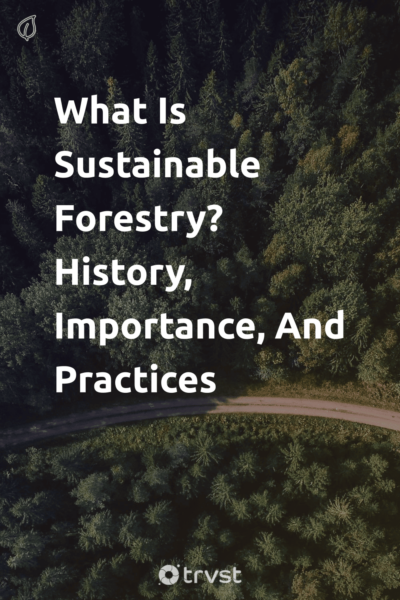What Is Sustainable Forestry? History, Importance, And Practices
Not every forest is a wild, unchecked expanse of vegetation. Some forests are deliberately cultivated for harvesting timber; those types of forests are called working forests, and the science behind them is forestry. However, there is a greener way to practice this. So, what is sustainable forestry?
This article discusses the history, benefits, and key sustainable forestry practices. Read on to learn more.
Related Read: Does Planting Trees Help Climate Change?
What is sustainable forestry all about?

Imagining a situation where cutting down trees could be deemed sustainable may be difficult. Leaving forests untouched would seem more acceptable, but in the face of human dependency on forest resources, sustainable forestry is the best course of action.
Sustainable forestry is all about balancing our needs and the well-being of forest ecosystems. The forest management method seeks to mimic how natural forests operate.
Wild forests are a hotbed of eco-diversity and great carbon sinks. They often have economic and cultural significance to local communities. Sustainable forestry aims to cultivate forests that can provide the same social and environmental benefits without giving up on the economic benefits.
Simply defined, sustainable forestry is cultivating trees for timber while protecting the surrounding biological and social ecosystem.
It's important to note that no universal sustainable forestry management system exists. That's because forest ecosystems and their social environment differ from place to place.
Related: Our forest quotes explore some of the themes of sustainable forestry.
History of sustainable forestry
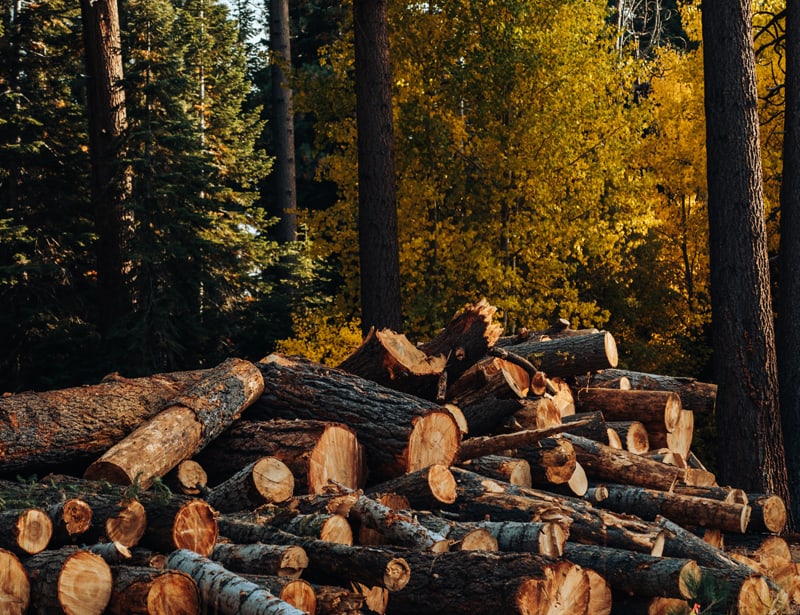
The act of harvesting wood goes back approximately 1,000,000 years, when human ancestors used wood ash to make fire.
Since then, humans have grown more and more dependent on forest resources. Over the years, it became clear that rules had to be put in place to meet the need for forest products in the long term.
The earliest trace of sustainable forest management comes from 16th-century Germany. Then, forest properties were divided into sections to ensure concurrent harvesting and regeneration.
Modern forest management is deeply intertwined with natural resource management. Many forest managers understand the need to conserve forest trees to ensure continuous supply. Despite good intentions, exploitative practices persist.
Illegal logging, clear-cutting, and monoculture plantations are some of the unsustainable practices we see in the industry today. When forests are managed unsustainably, many unnecessary challenges arise for humans and animals now and in the future.
Why is sustainable forestry important?
Forests are such important natural resources. They provide habitats for varieties of species, sequester carbon dioxide, and produce oxygen, to name a few.
Despite all the good they do, forests continue to shrink worldwide1. The timber industry accounts for 13% of deforestation yearly. This consumption trend is unsustainable, and so are the half-hearted attempts at reforestation.
Beyond keeping forests alive, sustainable forest management practices can enhance forest productivity while ensuring ecological and social benefits. Let's look at some benefits of sustainable forestry.
Strengthens the fight against climate change.
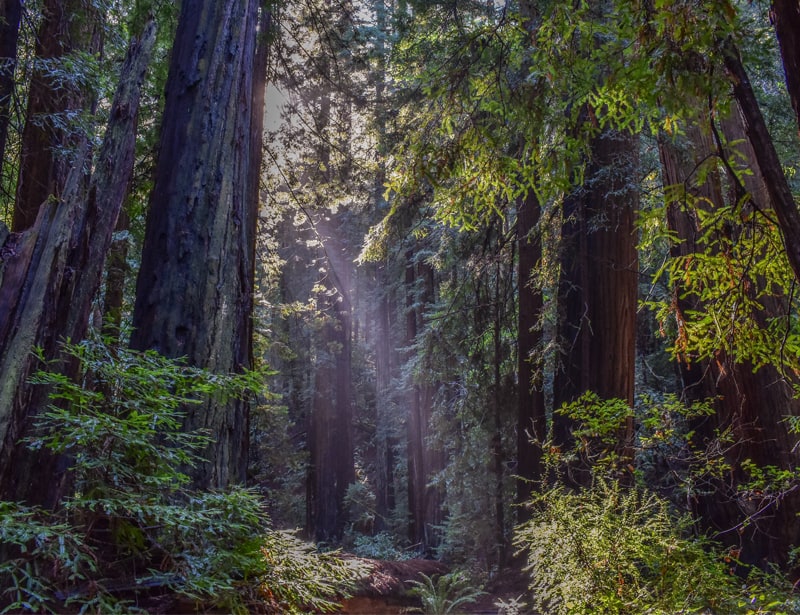
Forests mitigate climate change, capturing tons of carbon emissions in tree growth. Many climate researchers have advised that we need more trees to reduce greenhouse gases significantly2.
The latest number shows our forests hold 662 billion tonnes of carbon.
However, the demand for wood pulp and other forest products means we have continued cutting down trees. Sustainable forest management ensures that we can meet those demands without impacting the carbon dioxide-capturing capacity of forests.
If more foresters adopt sustainable forestry, the overall carbon sequestration capacity of the world's forests will increase.
Biodiversity conservation.
Often, humans take the interdependence of species for granted and find out the hard way that protecting nature is protecting themselves. The effects of deforestation and inefficiencies of monocultural reforestation make it clear how vital forest biodiversity is.
A biodiverse forest is capable of absorbing more carbon dioxide. It is also home to 80 percent of amphibians, 75 percent of birds, and 68 percent of mammal species. Even the soil and water quality of biodiverse forests are better.
Forests that are managed sustainably preserve biodiversity. They use different techniques to protect wildlife habitat and prevent threats to the ecosystem.
Protect forest health.

Healthy forests provide ecological services like air purification, water filtering, climate modulation, and flood and erosion control. They also produce better economic yield.
Besides the direct involvement of humans, many other factors endanger forests. Invasive species, natural disasters, parasites, diseases, pollution, and climate change threaten forest health.
Sustainable forestry practices encourage foresters to protect forests actively. Their involvement can help prevent forest fires, floods, and other natural disasters. They can also help to identify and eliminate biological threats to forest health.
Erosion and flood control.
The root system and canopy of natural forests prevent erosion of the forest floor, which stops sediment and nutrient runoff from entering into waterways. Forests soak up excess rainwater, and trees also act as barriers to flood waters, slowing them down.
Unsustainable logging practices aggravate soil erosion and flooding. Which reduces soil fertility, causes landslides, pollutes waterways, and can endanger humans and animals.
In sustainable forestry management, care is taken to manage tree felling in a way that does not impede the ability of forests to mitigate flooding and erosion.
Greener construction.
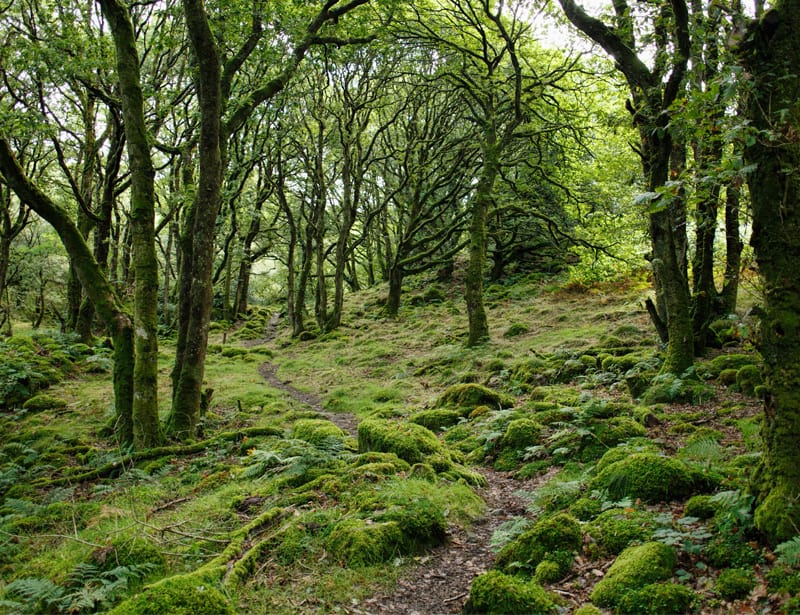
Wood is often an acceptable alternative to highly polluting materials like iron ore and cement. The material is renewable, recyclable, and energy efficient. It also allows for faster and cheaper construction.
However, the construction industry shies away from using wood for fear of promoting deforestation and other unsustainable forestry practices. Sustainable forestry can influence greener construction by making environmentally friendly timber available.
Preserves social equality.
Tree planting efforts are increasing globally due to the popularity of carbon offsets. But forest communities, especially in developing countries, are being affected adversely.
Many forestry companies have deepened poverty in local communities by cutting off access to forest resources that provide livelihood. Some communities have had their water resources depleted. There have also been cases of land grabbing, human rights abuses, and deprivation of cultural integrity.
Sustainable forestry practices require that foresters care about the local people. So, they establish programs that contribute to community development.
Sustainable economic development.
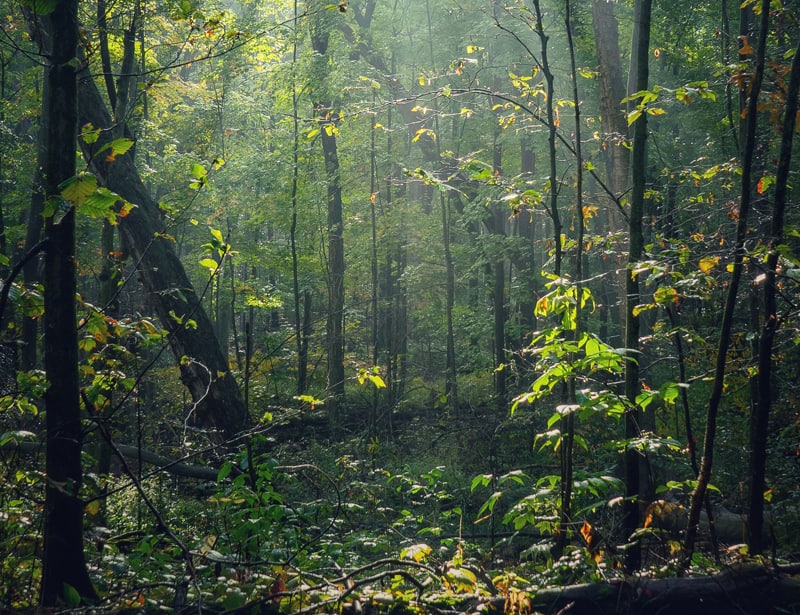
The global forestry sector is valued at over 1.5 trillion USD. Wood products are needed across industries like fashion, digital tech, medicine, etc. The sector employs over 33 million people.
Sustainable forestry can contribute to global economic growth by ensuring the industry stays productive. It can also provide green jobs and create new business opportunities.
A sustainable forest provides valuable ecosystem services such as watershed protection, carbon sequestration, etc. Those services have economic value that can be realized by selling carbon credits and other payments for ecosystem services schemes (PES).
Recreational opportunities.
Getting out in nature can improve our moods and entertain us. Forest bathing, hiking, biking, foraging, camping, and wildlife watching are recreational opportunities provided by forests. Many communities leverage these opportunities to generate tourism revenue.
Deforestation and monocultural reforestation put all these benefits at risk. However, sustainable forestry methods ensure that recreational functions remain available and open to all long into the future.
Sustainable Forest Management Practices
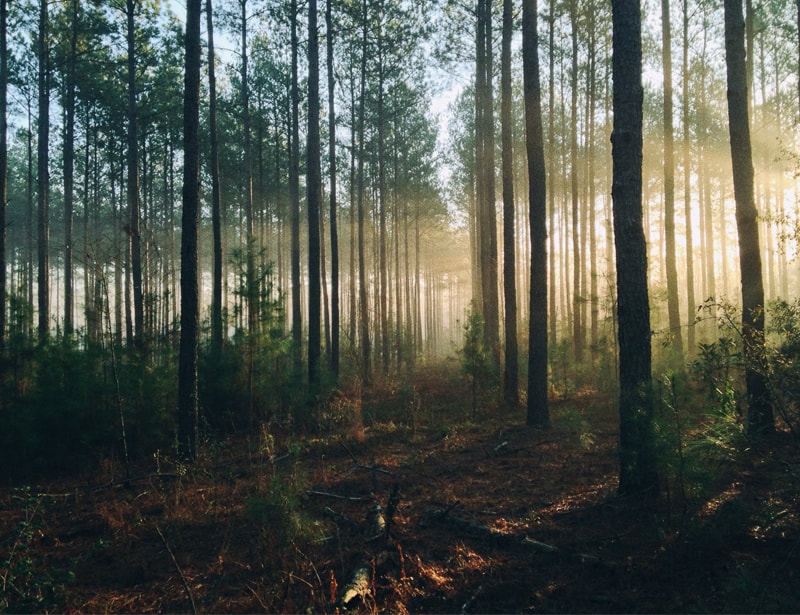
What makes sustainable forestry different from conventional forestry? Well, sustainable forestry techniques, regulations, and laws together form a flexible code of conduct that sustainable timber companies follow.
We list some sustainable forestry practices below.
Mixed Forests
Natural forests are multi-layered ecosystems with different types of plant species. Different types of trees, shrubs, herbs, grass, and even fungi exist. Such variation allows many other animals and microorganisms to thrive at varying levels of the forest ecosystem.
Working forests are typically monocultural to maximize profits. They contain one or a few types of trees, which result in low diversity. Sometimes, foresters even introduce foreign trees, which further harm native biodiversity. So-called monoculture forests increase the risk of erosion and impact soil health.
To preserve biological diversity, sustainable forestry encourages planting forests that mimic the original native composition. That improves the resilience of forests so that they can withstand the considerate removal of resources.
Age Balance
In a natural forest, you'll find trees of various ages, from saplings to trees that are decades old. That's because new seeds fall to the ground and grow every year. The age variation creates multi-levels of forest canopy, providing abundant suitable wildlife habitat.
It is in the best interest of timber companies to plant trees, or they'll soon run out of trees to chop. But they often wait decades to harvest mature trees before new planting occurs.
Sustainable forestry suggests strategizing forest regrowth to make sure that there is a balance of tree ages. There should be baby trees, young trees, and mature trees. In addition to providing a layered canopy, it also ensures a yearly sustainable yield, so there's no need to clear-cut large areas.
Sustainable Harvesting
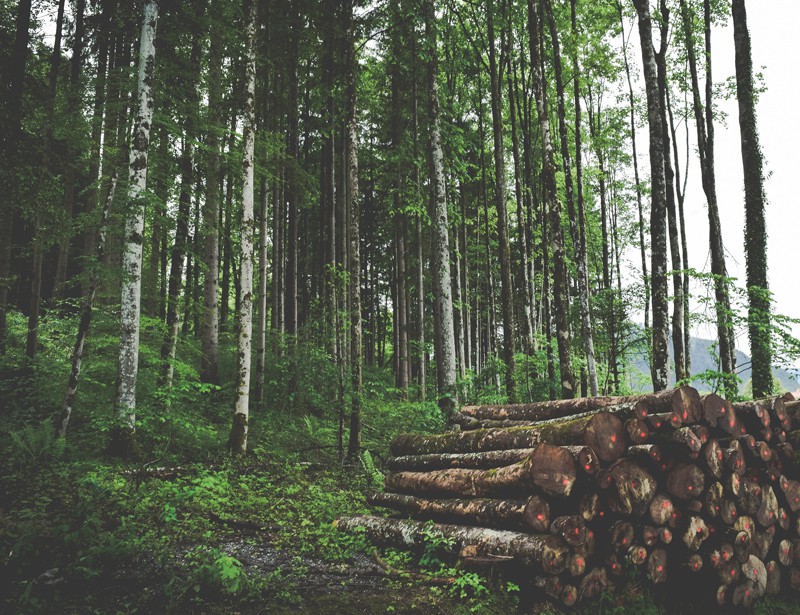
The manner of harvesting trees is an essential aspect of sustainable forestry. The conventional harvest practice is to clear-cut a large expanse of land, rooting up every vegetation in the site.
While clear-cutting may have some advantages, it's only best when done on a small scale. Because it destroys small plants and displaces wildlife, leaving an area vulnerable to erosion, the heavy machinery used would also disturb soil and soil organisms.
Selective harvesting is much better as it allows natural habitats to stay in place with negligible disturbance. It is easier to selectively harvest in a forest with a rich variation of tree species, sizes, and ages.
Forest Conservation
Managing forests sustainably involves active forest conservation. They should avoid the use of chemical pesticides and find natural solutions to pests and diseases. They should also protect waterways and properly dispose of waste.
The Rainforest Alliance says a sustainable forest must have protected areas where logging does not take place. We should protect areas with steep slopes or those that provide habitat for critical and endangered species.
The protected areas should be connected to waterways. Ideally, patches of protected areas should form a connected pathway so large animals can use it to move around and find undisturbed shelter there.
Inclusive Business Models

Often, rural communities near forests rely on them for income, fuel, fruits, nuts, oils, herbs, and medicinal plants. Therefore, a good forest management system must consider the well-being of local people.
Sustainable timber companies must contribute to the development of a community. They can do this by offering employment opportunities which can help curb illegal logging and wildlife poaching.
In some cases, a forest is managed by indigenous communities. Then, the opportunity for inclusion would be in sharing knowledge and helping them connect to sustainable supply chains. The Rainforest Alliance invests in training forest communities to remain responsible forest stewards.
Eco Certifications
There are organizations all over the world that monitor and offer a seal of approval for sustainable forests. They also certify wood and paper products from sustainable forests.
Because there is no global forestry management standard, the exact forestry practices may differ from organization to organization. but the goals remain the same.
Some of those organizations are
- The Rainforest Alliance co-founded the Forest Stewardship Council (FSC) to certify forests and derived products. An FSC label indicates that a wood product comes from a sustainable forest and has been manufactured sustainably.
- The American Forest and Paper Association established the Sustainable Forestry Initiative (SFI). It offers a chain of custody labels that tracks supply chains all from the forest to the finished product.
- Programme for the Endorsement of Forest Certification (PEFC) is one of the most reliable global certification bodies. The organization assesses forestry management schemes against a set of international sustainability standards.
Obeying forest protection laws
The government creates laws and regulations to protect forests and wildlife. An example is the Endangered Species Act of 1973. Unfortunately, many timber companies get away with flouting the laws because enforcement is lax.
In sustainable forestry management, timber companies adhere to environmental protection laws. They may introduce methods for checks and balances. They may also educate forestry workers about those laws and other practices they need to work by.
Of course, the company must pay attention to labor laws, worker safety, and rights.
Conclusion: What Is Sustainable Forestry?
Is it possible to achieve sustainable forestry? Absolutely. You can't take away cutting down trees from forestry, but you can make it sustainable by adopting the best management practices.
We can achieve sustainable forestry by making decisions that consider social and ecological consequences rather than focusing solely on profits.
A sustainably managed forest will provide for future generations, allow flora and fauna to flourish, and help win against climate change. Let’s support sustainable forestry by responsibly consuming forest products from brands with the proper certifications.
| 1 |
Ritchie, H. (2023). Cutting down forests: what are the drivers of deforestation?. Our World in Data. |
| 2 |
Bastin, J. F., Finegold, Y., García, C., Mollicone, D., Rezende, M., Routh, D., Zohner, C. M., & Crowther, T. W. (2019b). The global tree restoration potential. Science, 365(6448), 76–79. |
Jen’s a passionate environmentalist and sustainability expert. With a science degree from Babcock University Jen loves applying her research skills to craft editorial that connects with our global changemaker and readership audiences centered around topics including zero waste, sustainability, climate change, and biodiversity.
Elsewhere Jen’s interests include the role that future technology and data have in helping us solve some of the planet’s biggest challenges.
Fact Checked By:
Isabela Sedano, BEng.

